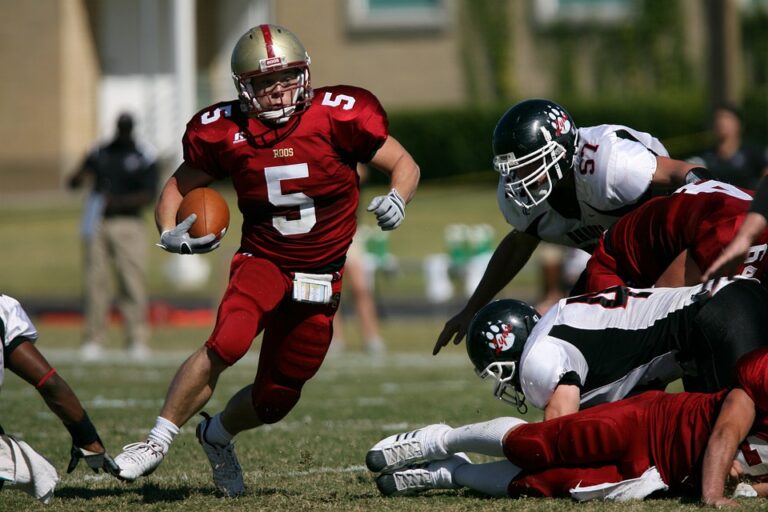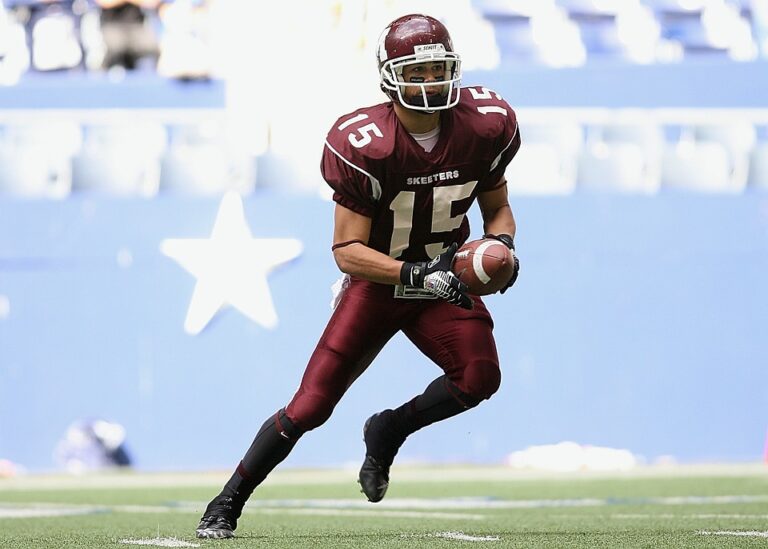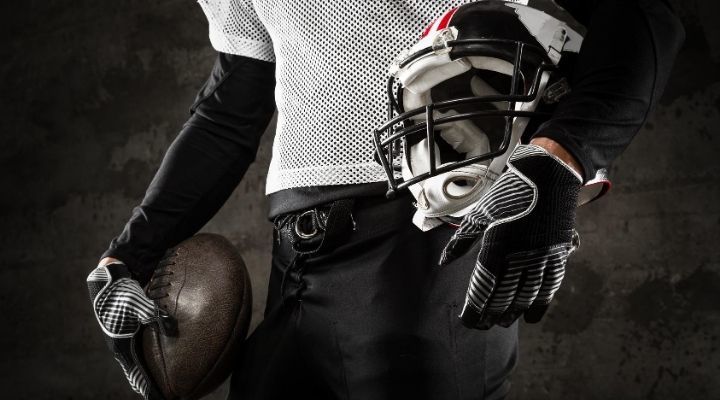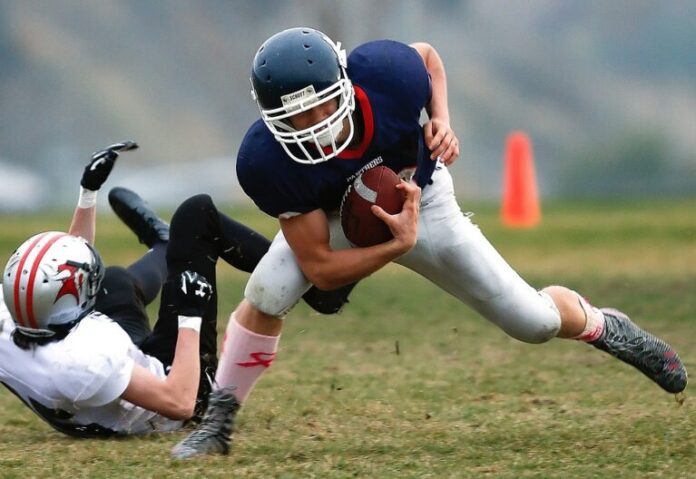Introduction: The Unsung Heroes of the Gridiron
When we think of football, our minds often go straight to the quarterback’s precise passes or the running back’s powerful runs. But there’s another key player who often goes unnoticed—the tight end. So, what is a tight end in football? This unique position is one of the most versatile on the field, combining the strength and blocking ability of an offensive lineman with the speed and hands of a wide receiver. The tight end’s dual role makes it one of the most exciting and dynamic positions, offering both blocking power and receiving skill. Let’s dive into this fascinating position that continues to evolve and shape the modern game.
The Basics: what is a Tight End in football
What Does “Tight End” Mean?
The term “tight end” might sound a bit strange if you’re new to football. But don’t worry, we’ve got you covered. The name comes from the player’s position on the offensive line. Unlike wide receivers who line up “wide” or far from the offensive line, tight ends line up right next to (or “tight” to) the offensive tackles. And since they’re typically on the end of the line, voila – we get “tight end.”
Where Does a Tight End Line Up?
Tight ends are football’s ultimate chameleons. They can line up in various spots depending on the play call:
- On the line of scrimmage next to an offensive tackle
- In the backfield as an H-back
- Split out wide like a receiver
- In motion before the snap
This flexibility is what makes tight ends so valuable. They keep defenses guessing and create mismatches all over the field.
The Evolution of the Tight End: From Blocker to Pass-Catcher

The Early Days: Glorified Offensive Linemen
Back in the day, tight ends were basically extra offensive linemen who occasionally caught a pass. Their primary job was to block, block, and block some more. They were the unsung heroes, doing the dirty work in the trenches while the glory went to the skill position players.
The Modern Era: Athletic Marvels
Fast forward to today, and tight ends have evolved into athletic marvels. Sure, they still need to block, but now they’re expected to run routes like wide receivers and make spectacular catches. It’s like asking a sumo wrestler to perform ballet – and somehow, these guys pull it off!
The Future: Positionless Football?
As tight ends continue to evolve, we’re seeing a trend towards “positionless” football. Some tight ends are so athletic that they’re essentially big wide receivers. Others are so good at blocking that they’re like extra offensive linemen who can catch. The lines are blurring, and it’s making the game more exciting than ever.
The Dual Threat: Blocking and Receiving
Blocking: The Unsung Skill
Let’s face it, blocking isn’t glamorous. You don’t see many highlight reels of great blocks (though maybe we should). But for a tight end, blocking is crucial. They need to be able to:
- Seal the edge on running plays
- Pass protect against defensive ends
- Lead block on sweeps and screen passes
It’s a tough job, but somebody’s got to do it. And tight ends do it with pride.
Receiving: The Glory Role
Now we’re talking! This is where tight ends get to shine. In the passing game, tight ends are:
- Reliable safety valves for quarterbacks under pressure
- Mismatch nightmares in the red zone
- Seam-busters who can stretch the field vertically
When a tight end hauls in a touchdown pass, that’s when they get to do their victory dance (and boy, do some of them have moves).
The Physical Demands: What It Takes to Be a Tight End

Size Matters: The Ideal Tight End Build
Tight ends are the Goldilocks of football players – not too big, not too small, but just right. Here’s what we typically see:
- Height: 6’3″ to 6’6″
- Weight: 240 to 260 pounds
Of course, there are always exceptions. Some tight ends are built like tanks, while others look more like oversized wide receivers. It’s all about finding that sweet spot between power and agility.
Speed and Agility: More Than Just a Big Body
Gone are the days when tight ends could get by on size alone. Today’s tight ends need to be:
- Fast enough to outrun linebackers
- Agile enough to make cuts like a receiver
- Strong enough to break tackles
It’s a tall order, but that’s what makes the position so exciting. These guys are true athletic specimens.
The Mental Game: Football IQ for Tight Ends
Reading Defenses: A Crucial Skill
Tight ends need to be more than just physical specimens. They need to be smart, too. Here’s why:
- They need to recognize coverage schemes
- They must adjust their routes on the fly
- They have to know when to block and when to release into a route
It’s like playing chess, except the chess pieces are 300-pound men trying to tackle you. No pressure, right?
Versatility: The Jack-of-All-Trades Mindset
Being a tight end means being ready for anything. One play you’re blocking a defensive end, the next you’re running a deep route. It requires:
- Quick thinking
- Adaptability
- A thorough understanding of the entire offense
Tight ends are the Swiss Army knives of football. They need to be prepared for any situation.
Famous Tight Ends: The Legends of the Position

The Pioneers: Changing the Game
Let’s take a moment to appreciate some of the tight ends who paved the way:
- Mike Ditka: The first tight end inducted into the Pro Football Hall of Fame
- Kellen Winslow Sr.: Revolutionized the position with his receiving skills
- Shannon Sharpe: Proved tight ends could be primary receiving threats
These guys weren’t just great players; they were trailblazers who showed what the position could be.
Modern-Day Stars: Setting New Standards
Today’s tight ends are taking the position to new heights:
- Rob Gronkowski: A dominant force in both blocking and receiving
- Travis Kelce: A route-running maestro with incredible after-the-catch ability
- George Kittle: The ultimate all-around tight end
These players are redefining what it means to be a tight end in the modern NFL.
Tight End Strategies: How Teams Use This Versatile Position
Creating Mismatches: The Tight End Advantage
Smart coaches know that tight ends are mismatch machines. Here’s how they exploit this:
- Lining up tight ends against smaller defensive backs
- Using tight ends to outmuscle linebackers in the passing game
- Employing multiple tight end sets to confuse defenses
It’s all about finding that weak link in the defense and exploiting it mercilessly.
The Safety Valve: A Quarterback’s Best Friend
When things go wrong, tight ends are often there to save the day. They provide:
- A reliable target on crucial third downs
- A big target in the red zone
- A check-down option when downfield receivers are covered
In many ways, a good tight end is like a security blanket for a quarterback. When in doubt, throw it to the big guy!
Training for Tight Ends: Developing the Complete Package

Strength Training: Building the Power
To handle both blocking and receiving duties, tight ends need to be strong. Their training often includes:
- Heavy compound lifts like squats and deadlifts
- Upper body work for blocking power
- Core exercises for overall stability
It’s not just about looking good in the uniform (though that’s a nice bonus). This strength translates directly to on-field performance.
Agility and Route Running: Finesse Meets Power
But it’s not all about brute strength. Tight ends also need to work on:
- Agility drills to improve footwork
- Route running practice to shake defenders
- Hand-eye coordination for those tough catches
It’s a delicate balance between power and finesse. The best tight ends make it look easy, but trust us, it’s anything but.
The Future of the Tight End Position: What’s Next?

Specialization vs. Versatility: The Ongoing Debate
As we look to the future, there’s an interesting debate in the football world:
- Should tight ends specialize as either blockers or receivers?
- Or should they continue to be Swiss Army knife players?
There’s no clear answer, but it’s fascinating to watch this position evolve in real-time.
The Impact of Rule Changes: Adapting to a New Game
As football continues to change, so too will the tight end position. We’re seeing:
- More emphasis on player safety, affecting blocking techniques
- Rule changes favoring the passing game, benefiting receiving tight ends
- Evolving defensive strategies to counter versatile tight ends
One thing’s for sure: the tight end position will keep us on our toes for years to come.
Conclusion: The Unsung Heroes Get Their Due
So, what is a tight end in football? They’re the blockers who can catch, the receivers who can block. They’re the guys who do a little bit of everything and make it look easy. From their humble beginnings as glorified linemen to their current status as some of the most exciting players on the field, tight ends have come a long way.
The next time you watch a football game, pay special attention to the tight ends. Watch how they move, how they block, how they catch. You’ll see a unique blend of size, speed, and skill that you won’t find anywhere else on the field.
In a game that’s often divided into offense and defense, linemen and skill players, the tight end bridges all gaps. They’re the ultimate team players, doing whatever it takes to help their team win. And in our book, that makes them the unsung heroes of football.
So here’s to the tight ends – may your blocks be strong, your routes be crisp, and your catches be spectacular. The game wouldn’t be the same without you.
FAQs: Everything Else You Wanted to Know About Tight Ends
Can a tight end throw the ball?
While it’s not common, yes, a tight end can throw the ball if the play calls for it. This is often seen in trick plays where the tight end might receive a backward pass and then throw it downfield.
Who is considered the greatest tight end of all time?
This is a subject of much debate among football fans. Some popular choices include Tony Gonzalez, Rob Gronkowski, and Shannon Sharpe. Each brought unique skills to the position and left an indelible mark on the game.
How many tight ends are typically on an NFL roster?
Most NFL teams carry three to four tight ends on their 53-man roster. This allows for different specializations (blocking vs. receiving) and provides depth in case of injuries.
Can a player switch from another position to tight end?
Yes, this happens occasionally. Some tight ends are former basketball players or wide receivers who have put on weight. The key is having the right combination of size, speed, and catching ability.
Do tight ends play on special teams?
Many tight ends, especially backup tight ends, play significant roles on special teams. Their combination of size and athleticism makes them valuable on kick coverage and return units.


